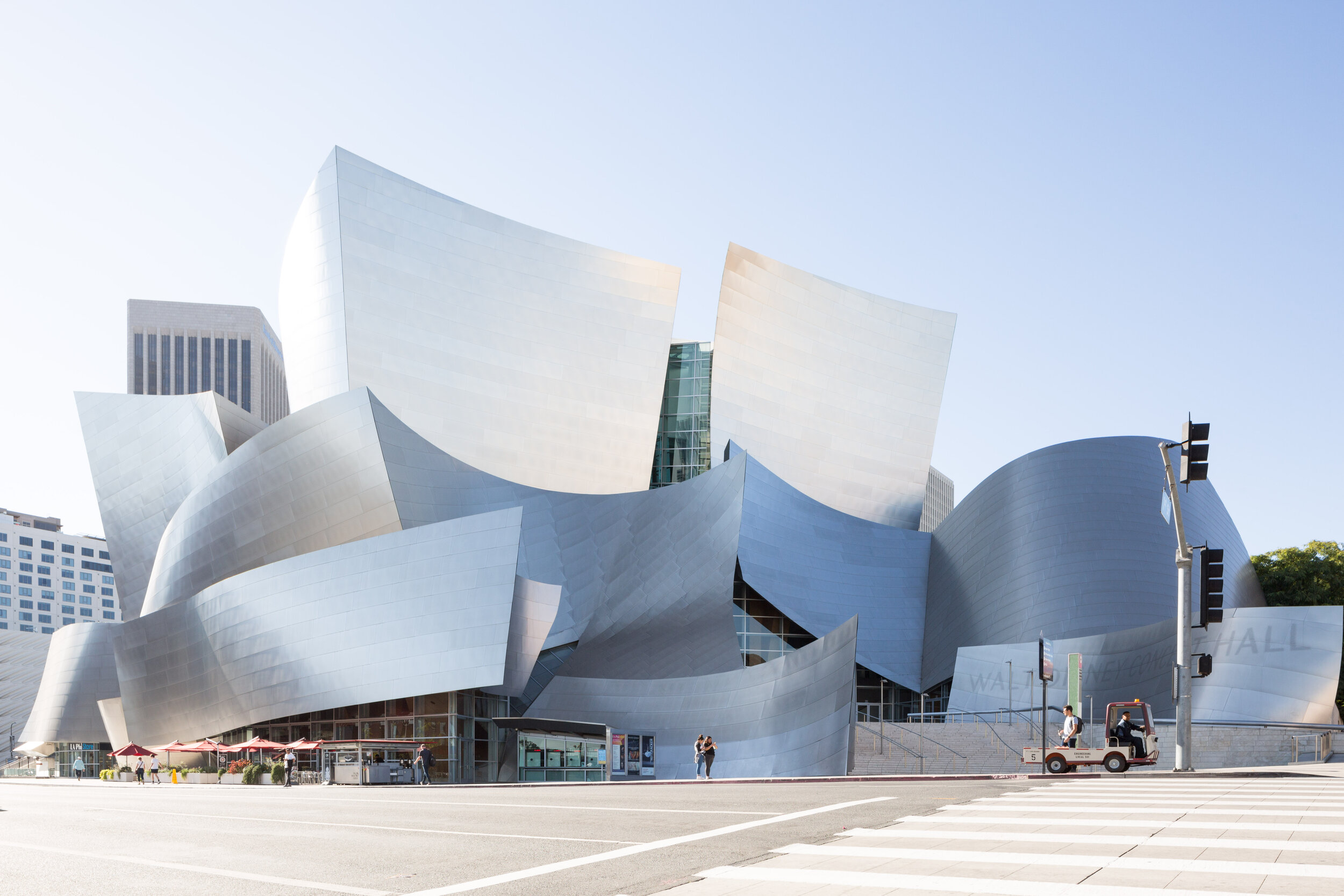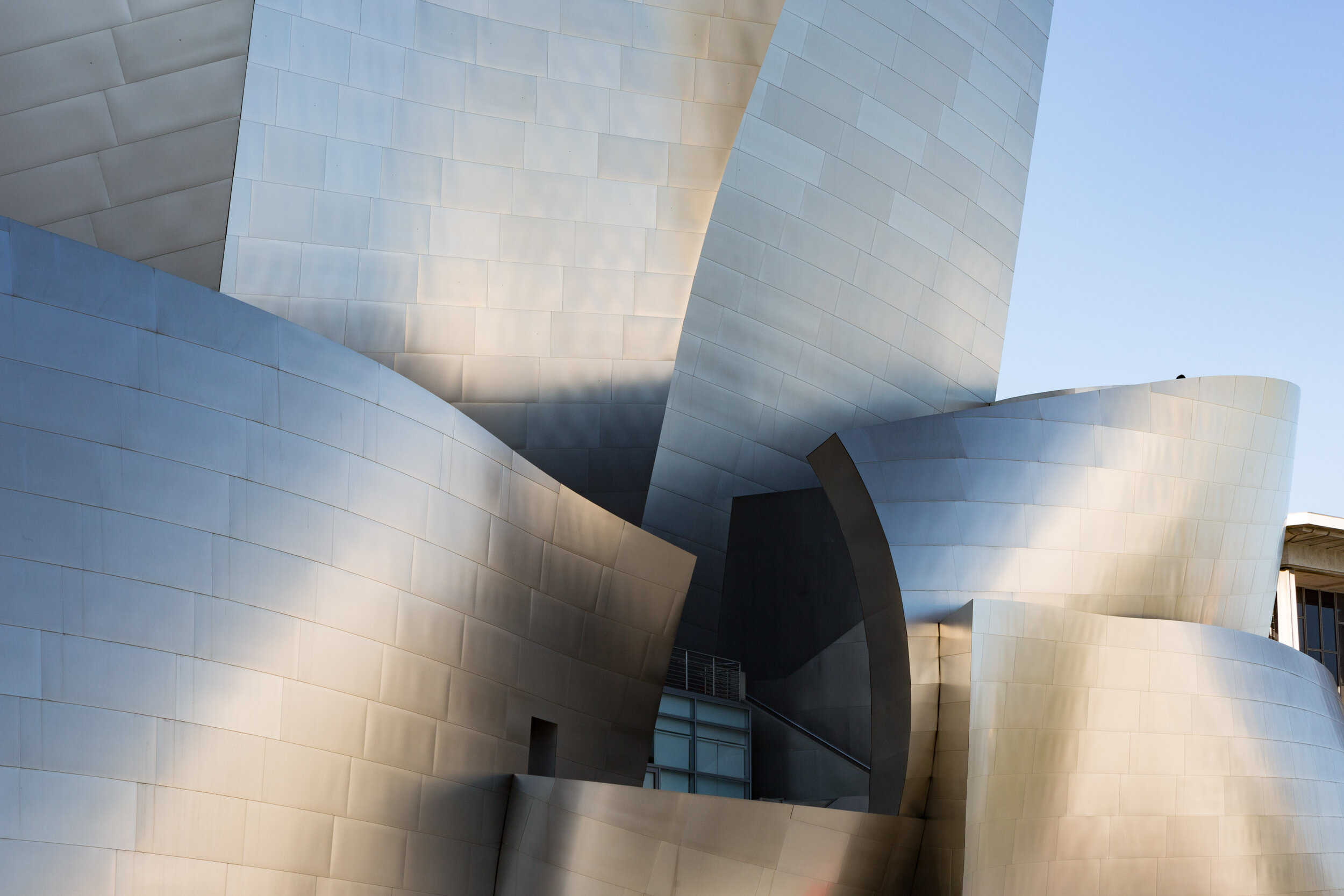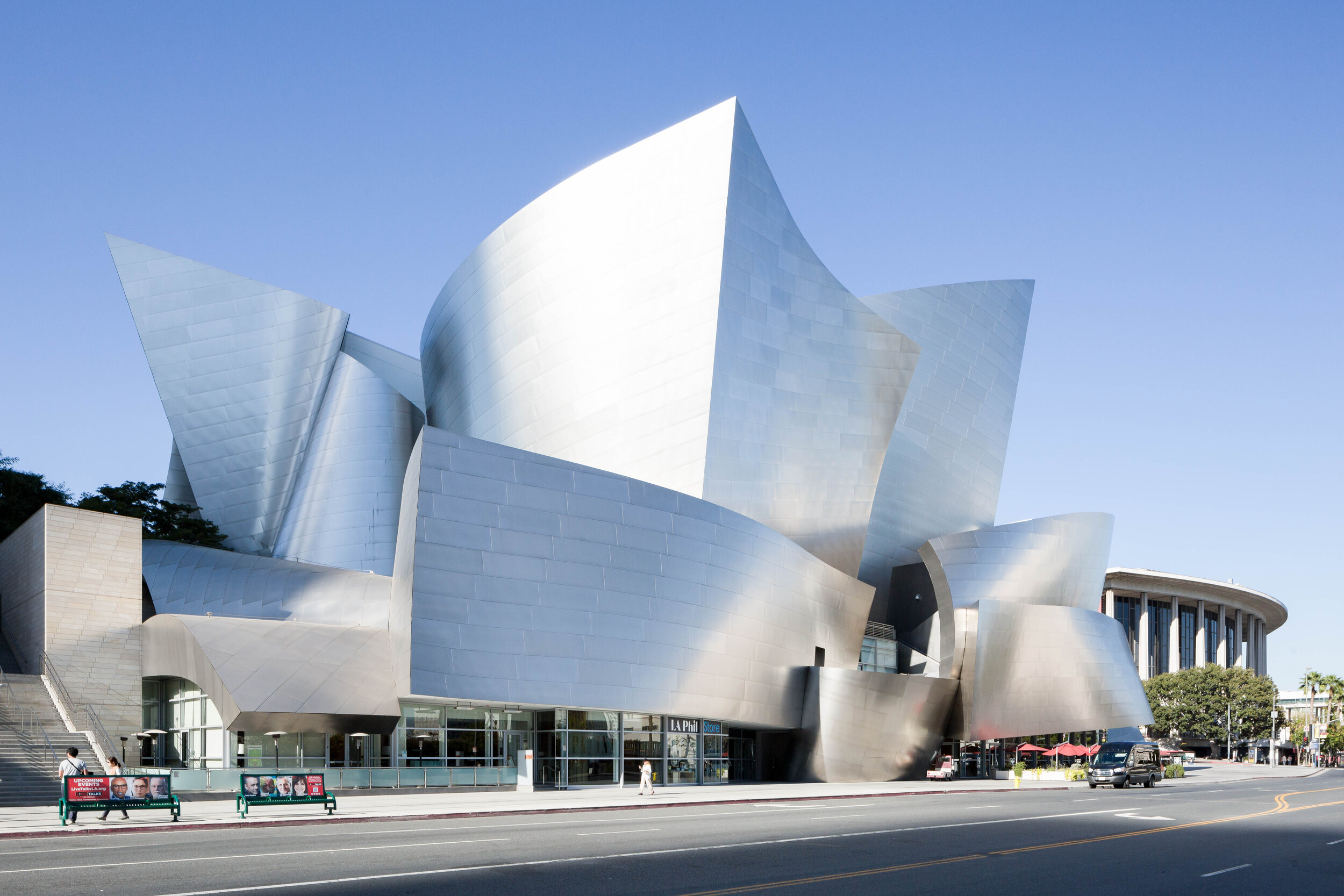Frank Gehry's Walt Disney Concert Hall
A year ago, I got to visit one of the most impressive buildings of the 21st Century. It’s the Walt Disney Concert Hall, designed by Frank Gehry. The final product is a confluence of neo-futurist and post-modernism that defies architectural convention only rivaled by the architect’s own design for the Guggenheim Bilbao in northern Spain. While I had expected it to appear futuristic after some two decades, I had not expected such a colossal icon in modern architectural history to feel small.
The Walt Disney Concert Hall is one of those buildings I would find myself marveling over online between reading up on the tallest buildings in the world and binging skyline images of cities I have never been to. I first saw it, oddly enough, in the 2008 comedy film Get Smart. It was the set location for the film’s crescendo, and it made an uncultured teenage me experience the unbelievable architecture. The billowing metal jutting out from the center had brought me to a noble belief that humanity could accomplish anything with architecture. That is what makes the building by Frank Gehry so successful, that it can imbue in children and adults a sense of intractable creativity by the sheer physicality of such an improbable structure.
Dismal Hope for the 90s
For a sense of reality, here’s what I had not known as a child. In more ways than one, the project was unlikely to finish. To quote Discover Los Angeles, “All it took was 16 years, $274 million, 30,000 architectural drawings, 300 tons of bolts and welds, 12,500 pieces of primary steel — and a whole lot of heart.” And what a high cost it had. Beyond fiscal, there was an enormous political battle that likely could not have one without a well-funded donor. The idea for the building was launched in 1987 with the $50 million loan by Lillian Disney, wife to the late Walt. For a good portion of the 1990s, the building was a steel frame that had a little hope of a future.
Guggenheim Bilbao Helped the Concert Hall Become Real
A major turning point for the project came through a period of international humiliation. A full decade past the 1987 starting point, the project in Frank Gehry’s own hometown was usurped when the Spanish city of Bilbao opened up the Guggenheim Museum Bilbao, an incredible debut for the transcendent architectural style Frank Gehry had hoped could launch in LA. The Museum was built at a cost of roughly $89 million. The Los Angeles Times wrote of it at the time that the project, “has already been touted as one of the great architectural works of the decade,”
...A descendant of projects like his 1989 Vitra Museum in Weil, Germany, and his proposed Los Angeles Walt Disney Concert Hall--designed in the late 1980s--Guggenheim Bilbao is an explosion of sculptural forms that the architect has doggedly honed to perfection. Like few buildings of its time, Gehry’s design twists together urban and building elements and transforms them into a sincere expression of what our culture means,” (Los Angeles Times).
The Guggenheim took roughly four years to complete. This came to be the necessary wind to help fill the sails of the concert hall in the States. As Paul Goldberger wrote in his biography on Gehry, “Because of the success of the Bilbao Guggenheim was almost a foregone conclusion before it opened...back home in Los Angeles it became harder to think of the stalled Walt Disney Concert Hall as anything but an embarrassment. A small provincial city in northern Spain could build the most advanced Gehry building yet designed, and Los Angeles, his home city, couldn’t get one off the ground?,” (pg. 312). It wouldn’t be completed until 2003.
Nearly Limestone
The design of the building is so iconic, and the use of metal cladding has become so iconic for Gehry that, it seems unthinkable for the Walt Disney Concert Hall to have been anything else. And yet, it nearly was. “...When it turned out that steel would cost $10 million less than limestone, he conceded, and adjusted the shapes of the curving sails slightly to make them somewhat simpler and stronger to compensate for the fact that metal was visually lighter than stone,” (pg. 318). How weird would that have been?!
Garden Level plan, via Frank Gehry
Cost
Can a building still be labeled a success if it exceeds costs? Where else could that money have been used? Is the creativity of an irreproducible icon adequate? The New York Times has reported that Lillian Disney donated roughly $274 million for the construction of the concert hall, far beyond the initial budget of $50 million. What else can you get for $274 million dollars?
Conclusion
Getting to see the Walt Disney Concert Hall was an eye-opening experience. It reminded me of how I felt over a decade ago, enamored by an appreciation for creativity. So few buildings even today have done so well at balancing practicality with a visionary mentality. Though its design may have started in the 80s, it is still one of the most futuristic buildings I have bere seen. The Hall’s only aesthetic weakness is that it is surrounded by the horribly wide LA-style boulevards.
Thank you so much for reading my post. Check me out on social media with the links below, and please press like and comment to help me satisfy the algorithms.










